If Adaptive Brightness isn’t working on your Windows 11/10 computer, these suggestions are what you need to get rid of the issue. In this post, we will talk about things that you can do if your screen’s brightness doesn’t change automatically even when Adaptive Brightness is turned on and what you can do when it doesn’t turn off.
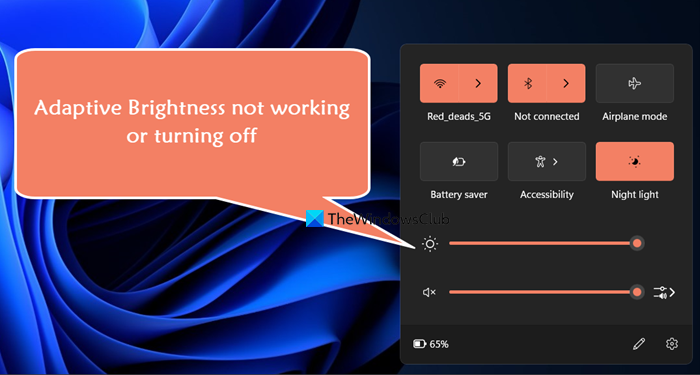
Why adaptive brightness is not working?
Adaptive brightness might not work on your computer if there is some issue with your power configuration, therefore, we will run the respective troubleshooter to figure out what’s the cause and the perfect remedy. To resolve the issue, we recommend you go through the solutions mentioned earlier.
Windows Adaptive Brightness not working
If Windows 11/10 Adaptive Brightness is not working on your Windows PC, you can follow these troubleshooting suggestions:
- Run Power Troubleshooter
- Disable/turn off corresponding options in GPU settings
- Restores defaults in the Power Plan
- Update Graphics driver
- Turn off/disable adaptive brightness using the Registry.
Let us see these suggestions in detail here.
1] Run Power Troubleshooter
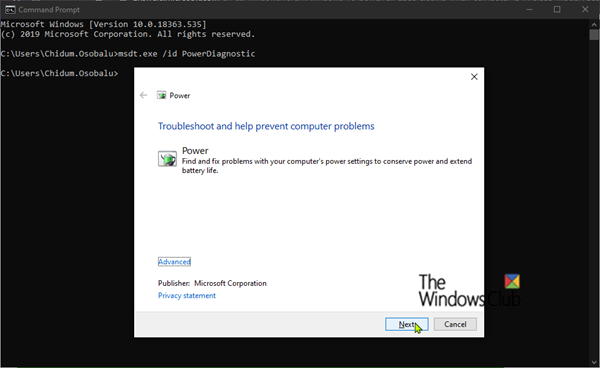
Run the Power Troubleshooter. As this problem can occur due to conflicted power settings, you should run the related troubleshooter to get it fixed.
You can run the troubleshooter from the Get Help app, but if you can’t find any related troubleshooter, follow the steps given below.
Windows 11:
Open the Command Prompt and then run the following command.
msdt.exe /id PowerDiagnostic
Then, follow the on-screen instructions to run the troubleshooter.
Windows 10:
You can run the CMD command mentioned earlier or open the Windows 10 Settings panel and go to Update & Security > Troubleshoot. Scroll down on your left-hand side and click the Power option. Following that, you will get another option called Run the troubleshooter. Click this button and follow the screen option to run it.
2] Disable/turn off corresponding options in GPU settings
Those, who have faced this issue on Windows 11/10, could be due to their graphics card settings. You may be using either an AMD graphics card or Intel’s HD Graphics. You need to disable power-related options in GPU settings. More specifically, you need to disable Vari-Bright in AMD graphics card settings and Display Power Saving Technology in Intel’s Graphics panel.
Intel users
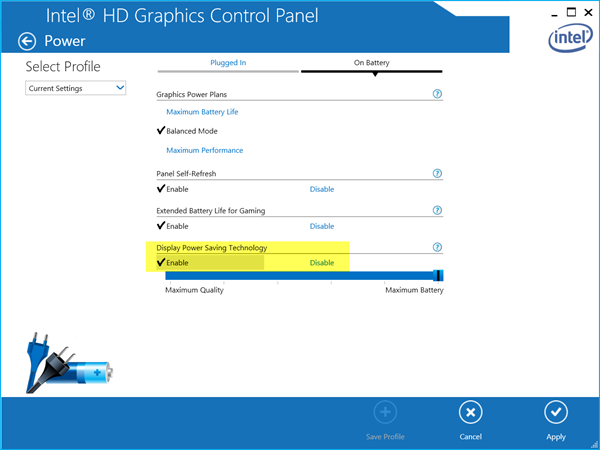
- Open the Intel Graphics and Media Control Panel. For that, you can open the Graphics Properties from the Desktop.
- Choose Basic mode and switch to the Power tab.
- After that, select On battery as the Power Source. Therefore, you will get an option called Display Power Saving Technology.
- By default, it should be set to enabled.
- You need to remove the mark from the checkbox and save your change.
AMD users
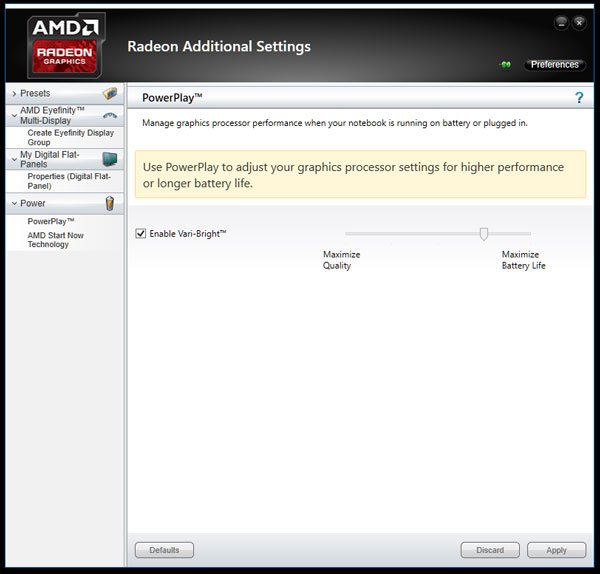
- Open the AMD Radeon settings panel and go to Preferences. You should get Radeon Additional Settings.
- Then you need to go to the Power tab and click the PowerPlay option.
- On your right-hand side, you should find an option called Enable Vari-Bright.
- You need to remove the mark from the checkbox and save your settings.
3] Reset Power Plan defaults
You can use a Command-line tool to fix this issue as well. To reset the Power Plan defaults, you need to open Command Prompt with administrator privilege and execute this command:
powercfg -restoredefaultschemes
This should do the trick for you.
4] Update Graphics driver
If you haven’t updated your graphics driver for a long time and installed a Windows update, there may be some compatibility issues, and hence, you may get such a problem. You need to update your graphics driver. You can check the related control panel of your NVIDIA or AMD graphics card for the update link.
5] Disable adaptive brightness in Registry
Before you begin, you should backup Registry files. Open Registry Editor and navigate to this path:
HKEY_LOCAL_MACHINE\SOFTWARE\Intel\Display\igfxcui\profiles\Media\Brighten Movie
Double-click on ProcAmpBrightness and set the value to 0.
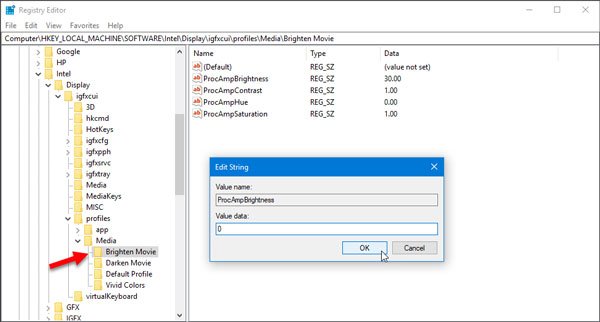
Now navigate to this path:
HKEY_LOCAL_MACHINE\SOFTWARE\Intel\Display\igfxcui\profiles\Media\Darken Movie
Double-click on ProcAmpBrightness and set the value to 0.
After that, close the Registry Editor and restart your computer, and check whether it is working or not.
Hope these suggestions will be helpful for you.
Read next: Windows laptop screen brightness flickering.
Why can’t I turn off adaptive brightness?
First of all, turn off adaptive brightness, then open Settings, go to System > Display > Brightness, and then turn off Change brightness based on the content. Finally, reboot your computer and check if you can turn off adaptive brightness.
Also Read: Windows Brightness Control not working or changes automatically.
Leave a Reply